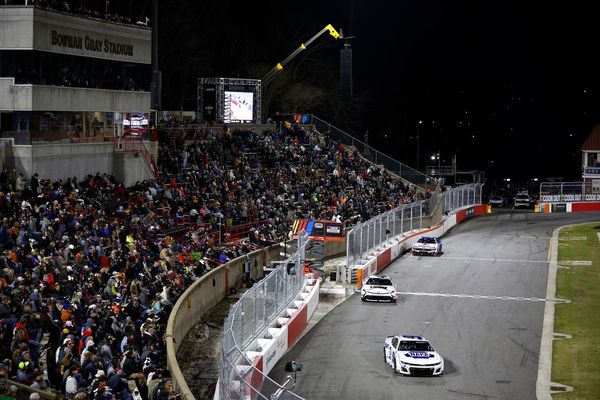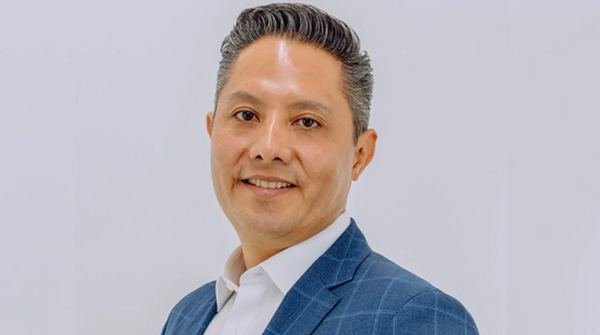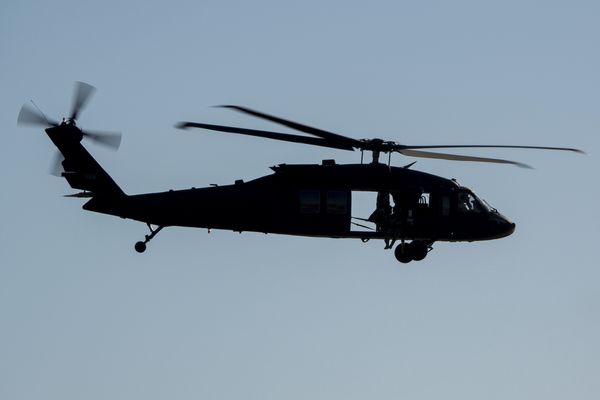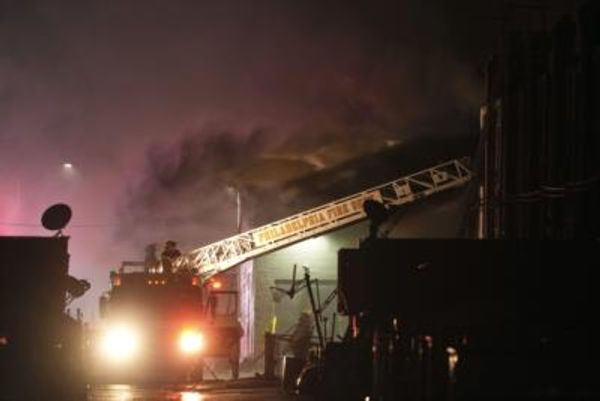When it comes to sports heroes, Marshall "Major" Taylor still isn't a household name — although he fully deserves to be.
Sure, there's a Major Taylor Velodrome in Indianapolis and a Major Taylor Boulevard in his adopted hometown of Worcester, Mass. The U.S. Bicycling Hall of Fame, which inducted Taylor in 1989, notes that he set more than 20 world records.
Still, Major Taylor (1878-1932) is hardly a name that flies off the tongue like a Tom Brady, Babe Ruth or Michael Jordan. Yet few would deny the track cyclist's place in the pantheon of sports greats.
Not only did he rightfully bill himself as the "Fastest Bicycle Rider In The World," as he titled his autobiography, but he accomplished his feats of brilliance while battling a more treacherous foe than any ever encountered on two wheels: rampant, unvarnished and unrelenting racism.
Take On Challenges Like Major Taylor
Taylor was Black. He was born in Indianapolis as one of eight children in 1878. He came of age as the 20th Century was about to dawn and white supremacy played out in the open. Faint moves toward equality hastened by the Civil War had faded against a backdrop of lynchings, racial segregation mandates and heinous crimes against minorities that often went unpunished.
Bicycling competitions excluded him because of the color his skin. People called him despicable names, ridiculed and cruelly caricatured him. Hotels and restaurants repeatedly turned Taylor away as he toured the world. But Taylor persevered and triumphed.
"Major Taylor's life on and off the racetrack inspires a can-do spirit and respect for good sportsmanship in everyone who learns about the champion cyclist's struggles and successes as a Black person who had to fight prejudice just to get to the starting line," said Lynne Tolman, president of the Major Taylor Association, a Worcester-based organization devoted to keeping the legacy alive.
Timing Is Everything: Major Taylor
Once he was at the starting line, Taylor proved to be a wizard. Over a racing career spanning 17 years through 1910, he beat the best riders in the U.S. and Europe at a time when bicycle racing was a major spectator sport, a precursor to the automotive age.
For that, his talent played out at just the right time. And as far as civil rights go, he was well ahead of his time.
"He overcame racism at the height of the Jim Crow era. He paved the way for boxer Jack Johnson and (baseball player) Jackie Robinson and many other great Black American athletes," said Michael Kranish, author of "The World's Fastest Man: The Extraordinary Life of Cyclist Major Taylor, America's First Black Sports Hero."
Taylor did it as a competitor in what was decidedly a dangerous sport. Spills, collisions and crashes could prove deadly. Taylor certainly encountered his share of injuries. But those, too, didn't stop him.
Find A Mentor
Taylor came to biking at an early age. He befriended the son of a wealthy man in Indianapolis who employed Taylor's father as a driver of the family's horse-drawn carriages. The son and his friends owned bicycles and he made sure that Taylor had one as well. Taylor became enamored with bikes, including learning riding tricks that would see him through his racing career.
Another break came when Taylor, having put a few bike races under his belt, met Louis "Birdie" Munger, a former bike racer and bike maker who realized he could cultivate Taylor as his manager. Munger's friends urged him to abandon his friendship with Taylor, but he would hear none of it. "I am going to make him into one of the fastest bicycle riders in the world," Taylor, in his autobiography, recalled Munger as saying. Taylor delivered on the prediction.
Taylor would also get to know his childhood hero, Arthur Zimmerman, who preceded him as a champion bicycle racer. Zimmerman, Taylor said, couldn't have been more gracious and supportive.
Battle The 'Monster'
Unlike Zimmerman, who was white, Taylor had to endure racism at every turn.
He was never just another rider. In the press, he was always singled out as the "colored" rider and given nicknames like the "Ebony Streak" or the "Black Cyclone."
Taylor referred to "that dreadful monster prejudice, which became my bitterest foe" and "one which I have never as yet been able to defeat."
He was banned from bicycle tracks. Particularly painful was being denied the opportunity to train at a YMCA in Indianapolis. Blacks weren't allowed.
All too often, white bicycle racers would band together and refuse to compete against Taylor because his skin color. He received threats. They would jostle him, throw an elbow or bump him in races. After one competition in Boston, Taylor was choked by a rival rider and left unconsciousness for several minutes.
Seek Out Allies Like Major Taylor
But Taylor was not without his defenders. He said he received the "fairest treatment" in the newspapers' sports pages. For instance, the Philadelphia Press criticized white riders for not standing up for Taylor after he was mistreated in St. Louis and Cape Girardeau, Mo. "The riders have drawn the color line, which is unconstitutional, un-American and unsportsmanlike," the paper stated.
Other times, it was individuals who came to his aid, whether it was covertly sneaking him on to a track where Blacks were banned or going before white riders to speak up for him.
In 1901, Taylor had returned to Worcester for a mile-long championship race. A group of riders led by a nemesis, Floyd MacFarland, conspired to defeat Taylor. The plan flubbed when Taylor was able to thwart attempts to box him in. When MacFarland chastised one of his compatriots, Owen Kimble, for failing to stop Taylor, Kimble surprisingly admitted he had been defeated and congratulated Taylor as "the fastest and squarest man among us."
Returning from Australia late in his career, Taylor, his wife and child were refused service at several San Francisco restaurants. To help the family find a decent meal, a white Aussie cyclist went to one of the eateries that had turned them away and ordered three meals. He explained to the waiter that the guests were late in arriving and paid the check. The friend then departed and in came the Taylor family. The trick worked. They sat down and dined "unmolested" by the staff.
Use Brains, Not Just Brawn
Taylor's path to becoming a champion wasn't just about his lightning speed on the track. He excelled at outsmarting opponents.
He discovered early that winning was just as much about heart and courage as it was about speed and strength. For instance, he learned to feign exhaustion toward the end of the race only to suddenly revive and to sprint to the finish.
His big advantage was what he called his "lightninglike jump," a quickness in turning on the juice when needed. The jump came in especially handy when he had a competitor dangerously hugging his rear wheel or when he needed to escape a dreaded "pocket," being boxed in by several colluding rivals to keep him from bolting to the front of the pack.
If needed, Taylor could also attempt to escape the pocket with a "slap" of his front wheel against the rear of a blocking cyclist. The goal was to spook the offending rider into swerving, opening up a hole. Taylor contended that the technique never caused another rider to take a tumble "which is remarkable considering the hundreds of times I worked it."
Taylor's pluck wasn't all about speed. Rather, he could be just as wily at the start of the race. He would best strong sprinters by recalling one of the bike tricks of his youth, such as keeping his cycle almost at a standstill at the start to force a rival to take the lead. Taylor could then draft behind the other cyclist for several laps to tire him out. As the end neared, Taylor would burst out to win the contest.
Practice Forgiveness Like Major Taylor
Despite being the target of deceitful tactics and having taken endless abuse, Taylor didn't hold grudges. "Life is too short for a man to hold bitterness in his heart," Taylor penned in his 1928 autobiography.
Yet even though Taylor's goal was to simply win races as an honest competitor, his fortitude made him a civil rights pioneer. In fact, Kranish said a move is underway to award a Congressional Gold Medal to Taylor, who died at age 53 in 1932. The cyclist is also the subject of a documentary, "Major Taylor, Champion of the Race," airing on PBS stations around the country.
Leave A Legacy
This year marks the 125th anniversary of Taylor's rise to be the world's fastest man. It happened after his victory in the one-mile event at an International championship race in Montreal, Kranish said.
"While most people may not be familiar with him, that is increasingly and inevitably changing, and his story is inspiring a new generation," Kranish said.
Tolman notes that there are more than 100 Major Taylor cycling clubs around the nation, plus four overseas. They are changing the face of the sport.
"They're our ambassadors," Tolman said, "riding bikes in Major Taylor's name, sharing that passion and trying to make cycling more diverse, inclusive and equitable."
Major Taylor's Keys:
- Pioneering cyclist still considered to be the fastest sprinter of all time
- Overcame: Scathing racism and discrimination while on the bike and off.
- Lesson: "In a word, I was a pioneer, and therefore had to blaze my own trail."







